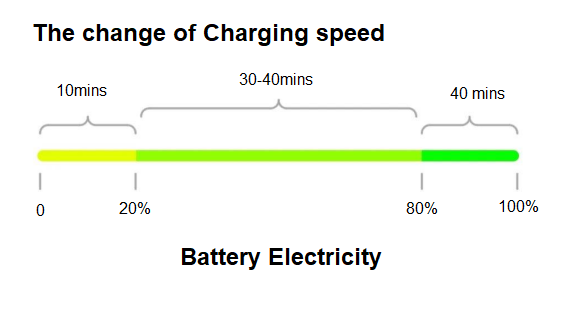Process of EV Charging
Take "DC Fast Charger " as an example , EV Charging process is generally divided into five steps.
1. Physically connect the charging gun with EV car socket.
2. Low-voltage auxiliary power-on: DC EV Charging Station provides low-voltage auxiliary DC power to the electric vehicle to activate the BMS (battery management system);
3. The EV Car terminal and DC Charging Station terminal send information to each other to obtain charging-related parameters of both parties;
4. Charging parameter matching: The DC Charger Pile and the EV Car match basic parameters such as the maximum charging input power and the maximum output power of the DC Charging Pile to ensure "adaptation" .
5. Formal charging: The charging pile adjusts its output voltage and current in real time based on the charging power demand information sent by the built-in BMS of the electric vehicle to ensure the smoothness of the entire charging process. At the same time, It will monitor charging status in real time to ensure charging safety.
"Fast charging" is a process which BMS interacts the charging pile information in real time to control the output voltage and current of the charging pile. The charging speed is not only determined by DC EVSE charger station .
Speed change of EV charging
The charging speed of the battery is not linear. The ev charging speed is different under different remaining power . The speed of car charging can be divided into three periods. The first 20% is the fastest, the middle 20%-80% is faster, and the last 20% is slow.

1. About 10 minutes after starting charging, the battery is in the preheating stage, and the battery activity gradually increases. In this stage, the charging power required by the battery gradually increases, and the charging speed is also accelerating.
2. When the SOC reaches the 50%~60% (the situation is slightly different for different brands of models), the charging speed slows down.
3. When the SOC reaches 95%, the battery is near to full. To ensure safe charging of the battery during operation, the BMS system will intervene at this time, and the charging pile will charge at a lower speed.
Problem: Many car owners do not wait for the battery to be fully charged before driving away, which lead the battery's full usage to decrease and then degrade.
From the perspective of the entire charging process, the power battery requires different charging power at different stages. Generally speaking, when the SOC is between 20% and 80%, the charging speed will be faster. The overall trend of charger is "from fast to slow".
 Email : info@esafenewenergy.com
Email : info@esafenewenergy.com WhatsApp : +8613776682492
WhatsApp : +8613776682492


